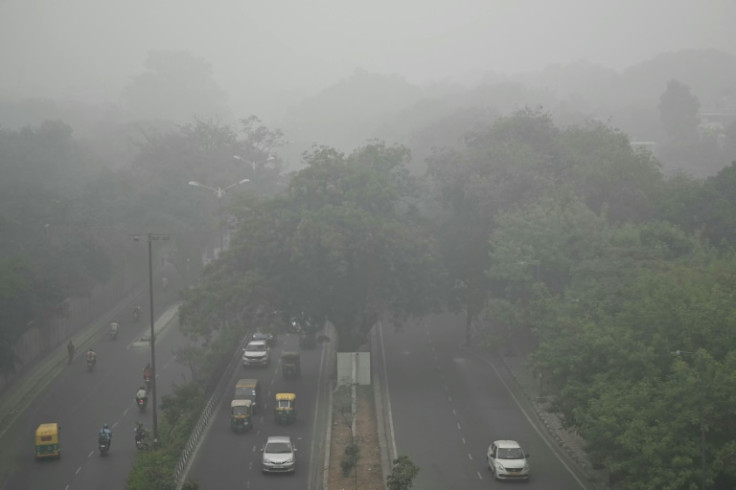Toxic Smog Smothering India's Capital Smashes WHO Limit

Residents of India's capital New Delhi choked in a blanketing toxic smog Wednesday as worsening air pollution surged past 50 times the World Health Organization's recommended daily maximum.
Many in the city cannot afford air filters, nor do they have homes they can effectively seal from the misery of foul smelling air blamed for thousands of premature deaths.
Cooler temperatures and slow-moving winds trap deadly pollutants each winter, stretching from mid-October until at least January.
At dawn on Wednesday, "hazardous" pollutant levels in parts of the sprawling urban area of more than 30 million people topped 806 micrograms per cubic metre, according to monitoring firm IQAir.
That is more than 53 times the World Health Organization recommended daily maximum of fine particulate matter -- dangerous cancer-causing microparticles known as PM2.5 pollutants that enter the bloodstream through the lungs.
By midday, when air usually is at its best, it eased to about 25-35 times above danger levels, depending on different districts.
Bikramjeet Singh, 25, who works as an environmental health safety manager walking on the streets, said breathing in Delhi was like "smoking cigarettes" and he worried for those with asthma.
"Older people have difficulties breathing," he said.
The city is blanketed in acrid smog each year, primarily blamed on stubble burning by farmers in neighbouring regions to clear their fields for ploughing, as well as factories and traffic fumes.
But a report by The New York Times this month, based on air and soil samples it collected over five years, revealed the dangerous fumes also spewing from a power plant incinerating the city's landfill garbage mountains.
Experts the newspaper spoke to said that the levels of heavy metals found were "alarming".
Swirling white clouds of smog also delayed several flights across northern India.
The India Meteorological Department said that at least 18 regional airports had a visibility lower than 1,000 metres (1,093 yards) -- dropping below 500 metres in Delhi.
India's Supreme Court last month ruled that clean air was a fundamental human right, ordering both the central government and state-level authorities to take action.
But critics say arguments between rival politicians heading neighbouring states -- as well as between central and state-level authorities -- have compounded the problem.
Politicians are accused of not wanting to anger key figures in their constituencies, particularly powerful farming groups.
City authorities have launched several initiatives to tackle pollution, which have done little in practice.
Government trucks are regularly used to spray water to briefly dampen the pollution.
A new scheme unveiled earlier this month to use three small drones to spray water mist was derided by critics as another "band-aid" solution to a public health crisis.
The WHO says that air pollution can trigger strokes, heart disease, lung cancer and other respiratory diseases.
It is particularly punishing for babies, children and the elderly.
A study in The Lancet medical journal attributed 1.67 million premature deaths to air pollution in the world's most populous country in 2019.
The choking carbon smog across Delhi came as researchers warned that planet-warming fossil fuel emissions would hit a record high this year, according to new findings from an international network of scientists at the Global Carbon Project.
Researchers said increases in CO2 emissions from India -- as well as growth in international aviation -- drove emissions up.
It found no sign the world was moving away from fossil fuels as planned.


© Copyright AFP 2025. All rights reserved.





















